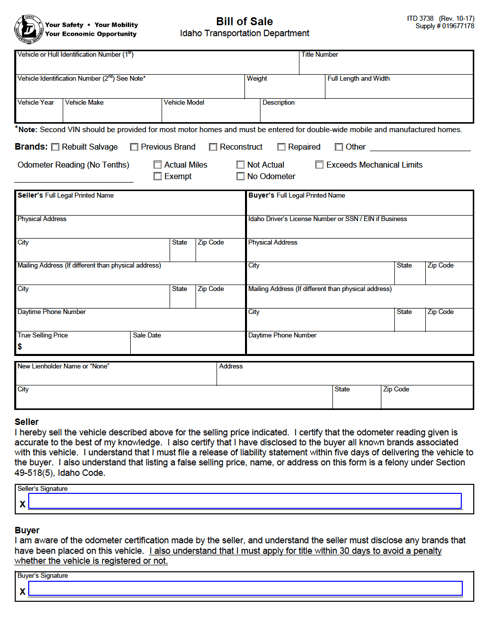Idaho Motor Vehicle Bill of Sale Form
An Idaho motor vehicle bill of sale form contains verified information about a car transaction. Each person has a legal obligation to complete the document truthfully. If either party fails to do so, the state can charge them with a felony.
The form must identify the car through its appearance, mileage, and identification number. In addition, the buyer, seller, and lienholder must include their personal details.
|
What is an Idaho Car Bill of Sale?
An Idaho car bill of sale gives the buyer authority over a vehicle. After paying the seller and receiving the keys in exchange, the individual acquires control. Neither party can edit or change the transfer details once the purchase occurs. Residents should consult their local DMV about questions and concerns regarding the transaction.
The buyer or seller must complete a motor vehicle power of attorney (Form ITD 3368) if they want another person to manage the transaction. It essentially gives someone else the rights and responsibilities to make decisions and complete assignments in the owner’s place. The grantor should file the form with the DMV to ensure the office does not turn away the agent. The representative can also hold onto the signed and notarized document and present it as needed when carrying out the tasks.
How to Register a Car in Idaho
Licensed individuals with car insurance and a title can apply for registration. First-time registrars must make an appointment at a county assessor’s office by phone or online.
Drivers can use the signed bill of sale (or title) for up to seventy-two (72) hours as their temporary registration. The state provides an online registration status check and title status check for individuals to find information about or purchase a title and registration.
Bring the Following:
|
